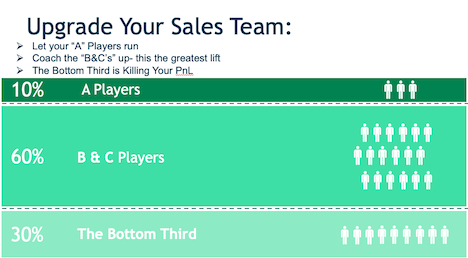 When we are working with a new customer, we want to get a self-assessment of the teams’ selling skills. The simple purpose of creating, delivering, and implementing a sales process is to improve your sales results, however you measure that. But in order for you to know exactly what you want to improve skill-wise, you must first understand which skills you want to focus on.
When we are working with a new customer, we want to get a self-assessment of the teams’ selling skills. The simple purpose of creating, delivering, and implementing a sales process is to improve your sales results, however you measure that. But in order for you to know exactly what you want to improve skill-wise, you must first understand which skills you want to focus on.
Before we go any further, let’s assess the selling skills on your team and identify areas where you think your team could use some reinforcement or skills development. You may also find that refining your sales process will help address some of these skill gap areas.
A stack ranking of selling skills forces the seller or the manager to place a “1” next to the skill that they feel is their strongest skill, and then a 6 next to the skill they believe to be the one that needs the most improvement. Thereafter, place a 2, 3, 4 and 5 next to the skills in a stack ranking that show the skills that are mastered and those that need to be improved.
The sales skills to be assessed are below. Rank 1 for the strongest skill and 6 for the weakest.
Proactive new business development
Assessing needs
Establishing value
Accessing key players
Managing the buying process
Negotiating and closing
So, go ahead and use the open space to the left of the skills listed above to stack rank your skills. Remember, stack rank means that there can only be one 1, one 2, one 3, etc. on through 6. Managers should do the same ranking and then compare the results. If the results align, then there is a common path on which skills to work on. If they don’t, then there is some dialogue needed to clarify and prioritize training and coaching priorities.



